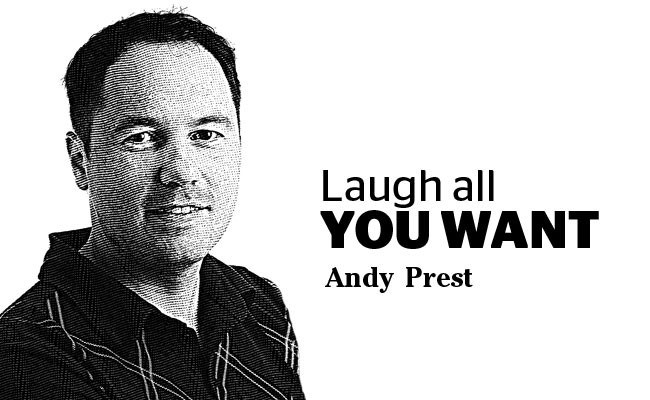You may have noticed that in this space I talk about my children a lot.
One of my favourite running gags is to mention some fool thing I’ve considered doing – say, for example, making my children sleep under the steps in a cardboard box – and then talking about having a pleasant chat with social services the next day.
To be clear though, I’ve never actually considered making my kids sleep outside in a box, and I’ve never worried about the government coming to my home and taking my children away. Why would I worry? We’re just a typical Canadian family, living our lives and trying to get by.
For generations of Canadians, however, having their children taken away wasn’t just a threat, it was a certainty. The fact that I have two boys of my own is why the heartbreaking story of Chanie Wenjack hit me very hard. At the root of the story is a horrible truth about our country that eats away at the core of who we are: for more than 100 years, the residential school system sponsored by the Canadian government quite literally stole away the children from First Nations families. The opening paragraph of the 2015 report from the Truth and Reconciliation Commission bluntly describes the residential school program – established in 1880 to assimilate Aboriginal people and eliminate their own distinct legal, social, cultural, religious and racial identities – as “cultural genocide.”
I grew up in Central Alberta surrounded by a lot of white people, some in positions of power, who held deeply racist views about First Nations people. The stories were all bad.
Looking back, there weren’t many people there to explain the other side of the story … the part where we stole their children. Seeing those words, as a parent, is devastating: We stole their children.
What more heinous act could there be than to take the children away from an entire population and abuse them, teaching them to hate their parents, their culture, themselves?
Chanie Wenjack was one of those children. He was taken from his father by armed officials and sent to a residential school hundreds of kilometres away. In 1966 Wenjack, at age 12, died while trying to walk back home, driven by a desire to escape the horrors of his school and to see his family and dogs again. He was found beside a railway line, frozen.
The story eventually caused a stir in Canada when an article in Maclean’s magazine poignantly described Wenjack’s plight and the aftermath, including an inquest that posed what was, at the time, an unprecedented question about the residential school system: “Is it right?”
The answer, an obvious one now, was no. It was not right. Yet residential schools existed for another generation, the last one closing in 1996.
Of course, Wenjack was not the only one to face that fate – thousands of children died under the state’s watch, and countless more were abused. The schools may be closed, yet the rift continues today.
The fierce Mary Ellen Turpel-Lafond, British Columbia’s first representative for children and youth, just finished up her last week on the job, and in exit interviews revealed that her biggest disappointment during 10 years of service was that she couldn’t get the government to do more to get Aboriginal children out of state care. Globe and Mail health columnist André Picard recently noted a shocking statistic: “there are more indigenous children in state care today (some 15,000) than there were in residential schools at their peak.”
All that is to say the story of Chanie Wenjack is as powerful and important today as it was 50 years ago. It’s little wonder that works of art commemorating his death – including Joseph Boyden’s novella Wenjack, and the Gord Downie-driven album, graphic novel, and CBC television special Secret Path – are generating such a huge public response. Boyden’s sparse words, Downie’s haunting wails – it all brings the story back to life in a way that reports and statistics never can. The response that these works have received gives hope that maybe this is a pivotal moment for our country.
So what should happen now? These stories must be told, again and again. If you haven’t seen Secret Path, watch it now – it’s available for free on the CBC website. Watch it with your children. Talk about it. Find Boyden’s work – it packs a powerful punch for a pocket-sized book you can read in an hour or two. Teachers, share these with your class. A graphic novel, a short story, an online video – these are practical tools to start a conversation, and children need to know the history so they can change the future.
There are many things that are great about Canada, but this is one thing we got horribly wrong. It is us, though. It is part of who we are.
I hope that for those who still feel powerless and alone, this will be the start of something positive. And for those who have power, who possess the means and resources to help heal this country – what are you waiting for?



